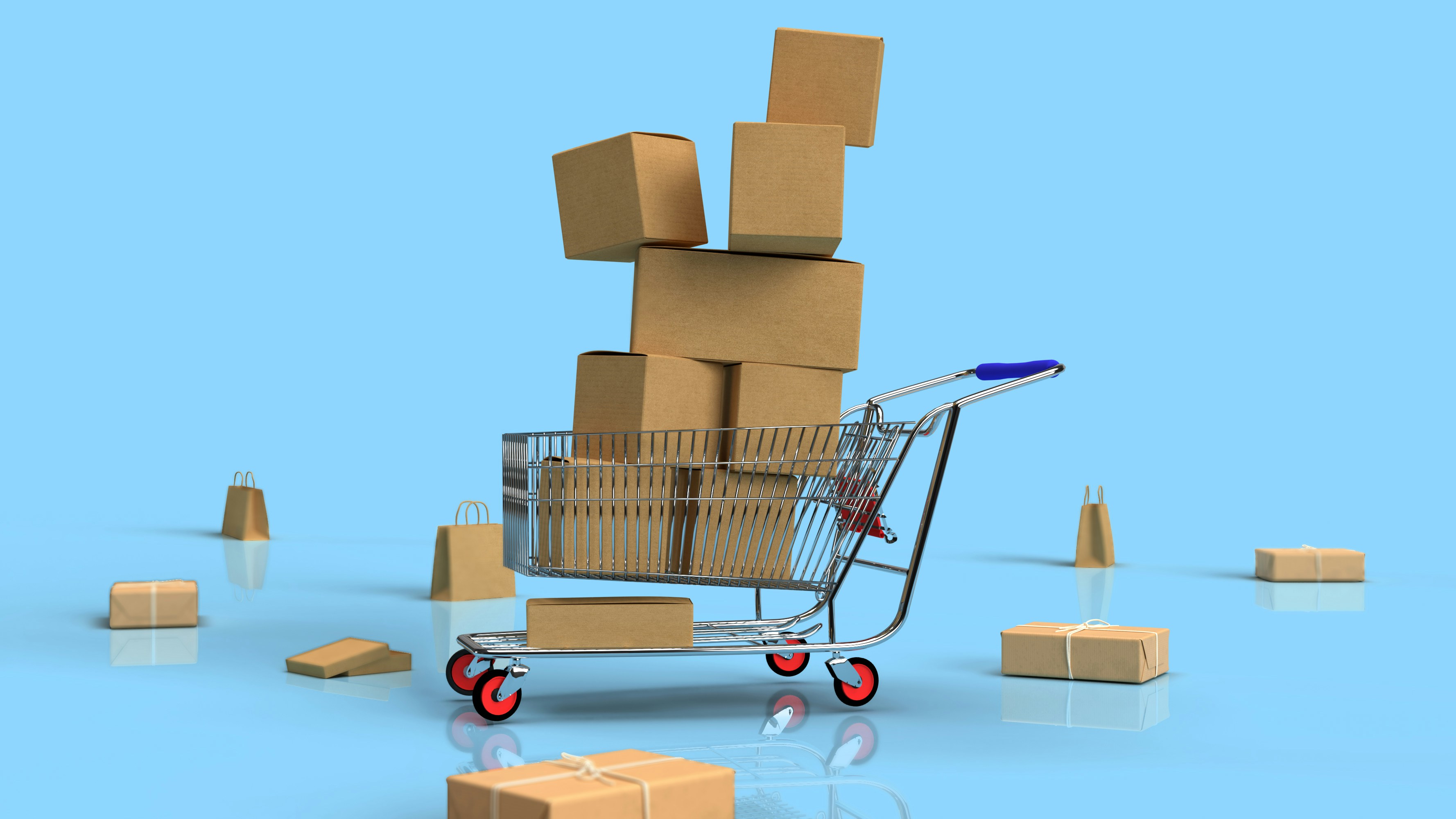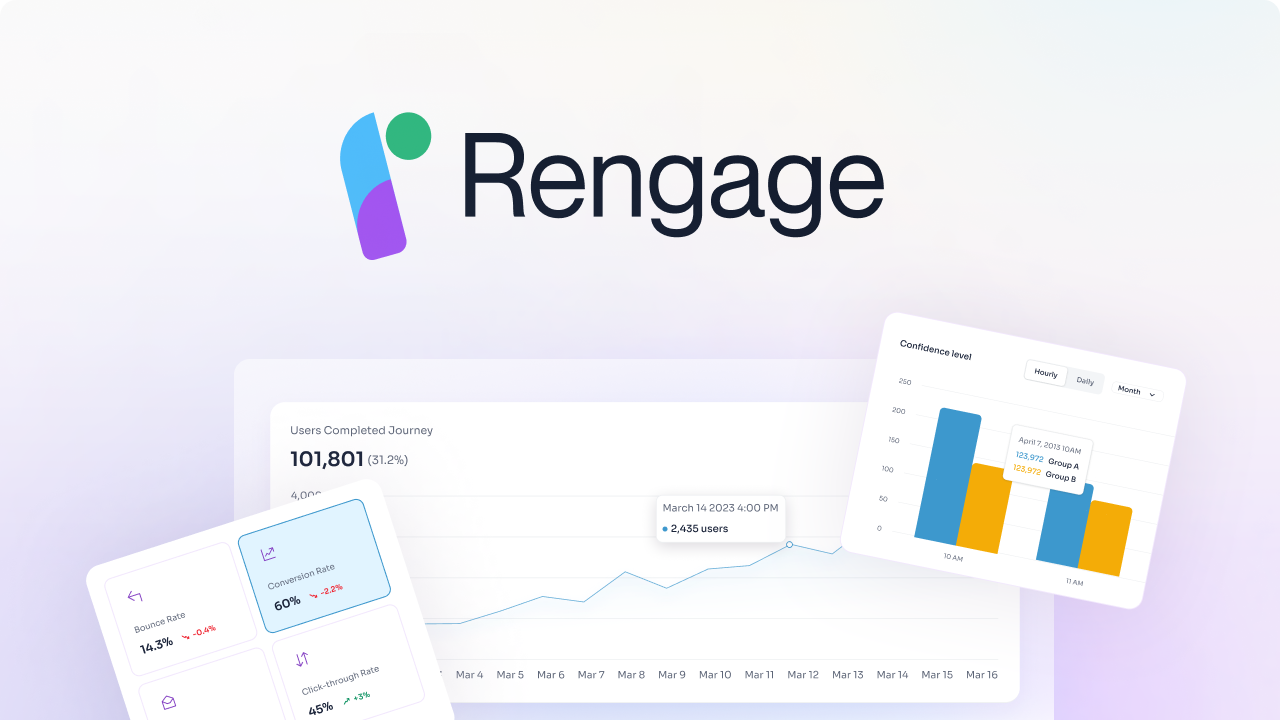If you are looking to streamline your customer lifecycle management, improve customer relationships, track customer interactions, provide better customer service, and increase customer retention, implementing a customer lifecycle management software is a smart move. With a robust customer lifecycle management software tool, you can simplify customer interactions and stay organized. It can assist you in making informed decisions.
What Is Customer Lifecycle Management & Why Its Important

Customer lifecycle management is the process of tracking the stages of the customer lifecycle, assigning metrics to each one, and measuring success based on those metrics. The goal is to track the business' performance over time as it relates to the customer lifecycle.
Shaping the Customer Journey
Every company has the opportunity to control and guide the customer journey. Most customers follow a similar set of steps when it comes to choosing a brand's product or service and, eventually, becoming loyal to that brand. Rather than leaving that to chance and hoping that customers will choose you, you can guide them in your direction.
Providing Value and Building Trust through Intentional Content
You're not manipulating prospects. Rather, you're intentionally giving them the kind of content they're looking for and thus providing value. In doing so, you prove that you're a reputable, transparent brand that has its visitors' and customers' best intentions at heart.
The customer lifecycle is handy to see how your customers behave, so let’s jump into detail on what that looks like at each stage of the process below.
Customer Lifecycle Stages
As mentioned, the customer lifecycle has five stages:
- Reach
- Acquisition
- Conversion
- Retention
- Loyalty
While it's similar to the buyer's journey, the customer lifecycle takes into account the customer’s experience, or what happens long after a prospect makes a purchase. We'll walk through these stages one by one.
1. Reach
In this stage, a customer searches for a product after becoming aware of an issue or problem they need to solve. This stage is called “reach” because it's your chance to reach the customer while they're deliberating.
In this stage, your customer is comparing products across competing brands (including yours), carrying out research, and reading customer reviews. Social media marketing, SEO, search engine marketing, and other inbound and outbound methods should place your brand on this customer's radar. This stage is successful when the customer reaches out to you for more information, looking to either educate themselves further or get a definitive price.
2. Acquisition
When the customer gets to your website or calls you on the phone, they've officially entered the acquisition stage.
This stage will look different depending on the acquisition channel the customer has used. If they called over the phone, for example, you'll need to respond to the customer's questions and concerns, as well as to inquire for more information on the customer's needs. Following that, you'll offer the best products or services to satisfy their needs, as well as educate them on the uses of those products or services.
Empowering Purchase Decisions with Informative Website Content
If they've found you via your website, they should come across helpful, educational content that can help them make a purchasing decision. Every content offer, pricing page, or blog post should give the customer what they need to decide on making the purchase.
Leveraging Gated Content and Live Chat for Customer Engagement
Some of this content should be gated so that you can get the customer's information. Don't forget: your service team should be available via live chat to answer urgent inquiries. In many ways, all interactions are customer service experiences — even something as simple as someone accessing and using your site is a customer service touchpoint.
3. Conversion
Having gained all the necessary information and being delighted with your brand's customer experience, the prospect makes a purchase. They've officially converted and turned into your customer.
In this stage, you want to make it clear that you're providing value. They've entered a relationship with you, not just made a purchase. But the work doesn't end here. It's time to retain the customer so that they continuously come back to your brand.
4. Retention
Customer retention starts by finding out how the customer feels. Check-in with them to ask how they've enjoyed their new product or service. Carry out customer service surveys, measure your Customer Satisfaction Score, and establish a Voice of the Customer program to find out what you can do better.
Using information directly from them, you can continuously make improvements to your products and services, as well as the customer service experience. In this retention stage, you'll want to offer exclusive perks that only your customers have access to. 24/7 support, product discounts, and referral bonuses are all perks that can take your customer from a plain purchaser to a brand promoter.
5. Loyalty
In this stage, the customer becomes an important asset to the brand by making additional purchases. They might post on social media about their experience with your company and write product reviews that inform a future customer during the reach stage.
Brand loyalty is of the utmost importance. Here's a common example.
In the automobile industry, there are dozens of brands selling similar vehicles for similar purposes. So, what helps a customer choose an SUV between, say, Toyota and Chevrolet? The answer is brand loyalty. For instance, the customer's first car could have been a Toyota Camry back in the 90s.
Building Brand Loyalty through Long-Term Reliability
The car was reliable throughout and beyond their college years. Now, as an experienced car-buyer looking to invest in a new SUV, which company are they going to go with? The brand that has been there for them for the past three decades, or the one that's completely new to them? Probably the former, unless a bad customer service experience drives them away.
Nurturing Brand Loyalty through Service Experiences
Your customer reaches this stage after being influenced by the previous four stages. In other words, you can't create brand loyalty out of nowhere. It must be nurtured and instilled in the customer through service experiences that solve for them and proves the value of your product (and of your brand).
Understanding the Fluidity of the Customer Lifecycle
Although these are the typical stages that a customer follows in their journey with a brand, this process can be fluid. Customers can come to learn about a brand in several ways: family or friend recommendations, social media, advertisements, research, and more. It's essential to be aware of the customer lifecycle so you can manage it effectively, and mapping it out can aid in the process.
Transforming Customer Interactions with Rengage's Comprehensive Solution
We provide a comprehensive solution for managing and enhancing customer journeys, delivering insights and measurable outcomes with no code. We accelerate your customer journey from onboarding, activation to conversion and churn. Enabling customers to unlock revenue from their existing user.
With Rengage, you can get insights into your segments, run campaigns with an intuitive journey manager, and get insights to measure how your journeys impact users conversion through our Journey Moments and Journey Builder features.
- Journey Moments: insights into your micro-segments
- Journey Builder: intuitive multi-channel marketing automation
- Insights prediction and attribution.
Book a free demo to learn about how you can transform customer interactions into personalized experiences that drive loyalty and growth.
Related Reading
What Is Customer Lifecycle Management Software?

Customer lifecycle software is an essential tool that helps businesses understand how customers interact with their brand at different stages of the customer journey. It provides valuable insights to reduce churn and increase customer lifetime value. Here's a deeper look at the benefits of utilizing customer lifecycle software for marketing strategies:
Attracting Leads and Boosting Brand Recognition at the Reach Stage
Customer lifecycle software allows businesses to deliver personalized content to boost brand recognition, capturing leads through automated campaigns. By tracking and analyzing marketing performance, businesses can make better decisions about their marketing strategies.
Nurturing Leads and Improving Conversions at the Acquisition Stage
At the acquisition stage, customer lifecycle software helps nurture leads with targeted email campaigns, provides personalized product recommendations, and adjusts landing pages for improved conversions.
Automating Processes and Offering Incentives for Conversion
During the conversion stage, businesses can automate abandoned cart recovery, offer incentives and discounts, and streamline the checkout process to improve conversion rates.
Enhancing Retention Strategies and Creating Loyalty Programs
Customer lifecycle software assists in sending personalized post-purchase follow-ups, gathering customer feedback and reviews, and creating targeted upsell and cross-sell campaigns for better retention. It can be used to implement loyalty and rewards programs, offer exclusive perks for VIP customers, and encourage brand advocacy and referrals to foster long-term customer loyalty.
By utilizing customer lifecycle management software effectively, businesses can streamline their customer interactions across different lifecycle stages, consolidate data, automate workflows, and gain actionable insights to align with their marketing, sales, and customer service strategies.
16 Leading Customer Lifecycle Management Software Platforms
1. Rengage

Rengage offers a comprehensive solution for managing and enhancing customer journeys, delivering insights and measurable outcomes with no code. It accelerates the customer journey from onboarding to conversion and churn. With Rengage, users can unlock revenue from existing users by obtaining insights into segments, running campaigns through an intuitive journey manager, and measuring how journeys impact user conversion.
Notable features include Journey Moments which provides insights into micro-segments, Journey Builder for intuitive multi-channel marketing automation, and Insights Prediction and Attribution.
2. Salesforce Marketing Cloud
Salesforce Marketing Cloud provides a suite of marketing automation, analytics, customer lifecycle, and segmentation tools. This platform helps create personalized buyer interactions across different channels such as chat, social media, email, SMS, and ads. Marketing Cloud also offers integration with several CRMs and enables sales reps to track messages in the sales pipeline quickly. It allows users to upload offline data, automate Facebook ads, and manage content creation.
3. HubSpot
HubSpot is a complete marketing automation and lifecycle marketing software with a focus on inbound marketing. It is a cloud-based CRM platform with sales, service, marketing, and content management software tools. HubSpot collects, stores, and analyzes client data on its CRM software and tracks and reports performance metrics for marketing, sales, and customer relationship interactions.
4. EngageBay
EngageBay is a cloud-based customer lifecycle marketing software that offers similar functionalities to HubSpot but is more affordable. It provides a wide range of features including email marketing, CRM, help desk, lead generation, landing page creation, social media marketing, and marketing automation. EngageBay is praised for its ease of use and robust feature set.
5. Pega 7
Pega 7 is a web-based automation platform and lifecycle marketing software that optimizes complex customer lifecycle journeys for enterprise-level users. It integrates BPM, CRM, Case-based Management (CBM), AI, and robotic process automation functionalities to personalize customer experiences and deliver targeted messaging across multiple channels.
6. ChurnZero
ChurnZero is a cloud-based customer lifecycle software designed to boost customer fulfillment rates for subscription businesses. It focuses on reducing customer churn through tools for onboarding, reactivation, customer engagement, product usage tracking/analytics, segmentation, and integration with other tech tools.
7. ActiveCampaign
ActiveCampaign boasts advanced automation features, making it a great option for users in need of powerful automation capabilities.
8. Mailchimp
Mailchimp is known for its email marketing, lifecycle marketing, and automation tools. Over the years, it has evolved into a comprehensive marketing automation solution with advanced contact management features.
9. Marketo
Marketo by Adobe is an enterprise-level lifecycle marketing software tailored for large enterprises. It offers automation, ABM, lead development, content creation, and more.
10. Customer.io
Customer.io enables users to create personalized messaging journeys without complex automation software. It supports customer feedback, re-engagement campaigns, welcome sequences, and more.
11. Intercom
Intercom is a lifecycle marketing software with fast response times, multichannel marketing, automation, and AI customer service solutions.
12. Autopilot (Now Ortto)
Autopilot (Ortto) offers visual marketing software with lifecycle marketing features, simplifying complex automation workflows.
13. Omnisend
Omnisend is an e-commerce marketing automation software suitable for small and medium businesses, e-commerce owners, and online retailers.
14. Zoho CRM
Zoho CRM is equipped with sales, marketing, and customer support tools, including marketing automation features for streamlining and optimizing customer lifecycle management.
15. Agorapulse
Agorapulse is a social media management platform with CRM functionality that facilitates customer engagement, social media content management, and performance measurement across multiple networks.
16. LoyaltyLion
LoyaltyLion is a customer loyalty and rewards platform for e-commerce businesses. It helps develop loyalty programs to drive repeat purchases, referrals, and customer lifetime value by integrating seamlessly with email and SMS automation for more effective lifecycle marketing.
Related Reading
- Digital Customer Journey Mapping
- Customer Journey Analysis
- Ecommerce Customer Journey
- B2B Customer Journey
- Customer Journey Orchestration
- Omnichannel Customer Journey
- Saas Customer Journey
- Marketing Automation Customer Journey
- Customer Journey Optimization
- Micro Moments Customer Journey
- Customer Journey Research
- Customer Journey Automation
- Customer Journey Insights
- Customer Journey Dashboard
- Customer Journey Personalization
- Customer Journey Metrics
- Customer Journey Best Practices
How to Choose the Right Customer Lifecycle Management Software

When selecting a customer lifecycle management system, there are several factors to consider to ensure that the software aligns with your specific customer engagement strategies.
Manage Entire Lifecycle
A good CLM software should cover your entire business operations - right from sales, marketing, billing to customer support. This will help you get customer data and understand their needs across all the stages of the life cycle.
360-Degree Customer View
A 360-degree view of each customer’s journey helps you better understand customer needs, use the data to personalize experiences, identify customers who are defecting and prioritize engagements.
Customer Segmentation
The software must allow you to group your audience based on various attributes so that you can design personalized campaigns and experiences for them. This will give you the ability to tailor messages, timing, and content, etc., to enhance customer experience and satisfaction.
Behavior Tracking
A good CLM must consolidate customer data from different sources and help you use it to personalize messages, run event-based campaigns like cart abandonments.
Multichannel Engagement
The Customer Lifecycle Management system must facilitate engagement across multiple channels, including mobile phones, email, website, and social media. You need to be able to reach your customers where they are for more effective life cycle management.
Native Integrations
The CLM software must provide support for native integrations with 3rd party business systems and apps such as accounting software, email, project management, and communication tools to help you connect your existing software with the CLM system and optimize your processes through automation.
Related Reading
- Customer Journey Mapping Tools
- Customer Journey Management
- Braze Alternative
- Fullstory Alternatives
- Adobe Analytics Alternatives
- Customer Journey Analytics Tools
- Iterable Competitors
- Marketo Alternatives
- Onesignal Alternatives
- Clevertap Alternatives
- Bloomreach Alternatives
- Customer.io Alternatives
Create Personalized Experiences That Drive Loyalty and Growth with Rengage — Book A Free Demo Today
Delve into the world of Customer Lifecycle Management Software with the innovative and intuitive platform called Rengage. This comprehensive solution is designed to not only manage but also enhance customer journeys, culminating in measurable outcomes and valuable insights without any coding required.
With Rengage, you can propel your customer journey forward, from onboarding and activation to conversion and even churn. This enables you to unlock revenue from your existing user base while creating a more personalized and engaging experience.
Unlock Revenue with Existing Users through Rengage
Rengage allows you to truly understand your customer segments, empowering you to run targeted campaigns with a user-friendly journey manager. By leveraging the power of Journey Moments and Journey Builder, you can gain profound insights into your microsegments while seamlessly creating multi-channel marketing automation. This holistic approach is complemented by insights, predictions, and attributions, allowing you to measure the impact of your journeys on user conversions.
Book a Free Demo to Transform Customer Interactions
Transform your customer interactions into personalized experiences that drive loyalty and growth with Rengage. Book a free demo today and discover how you can revolutionize the way you engage with your customers.
